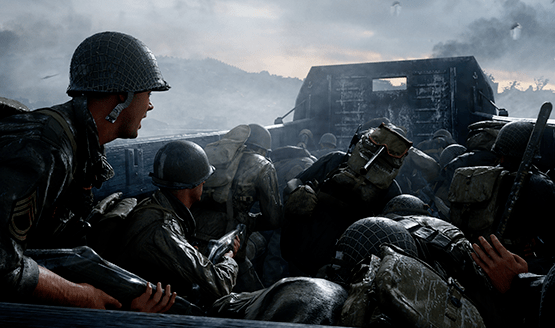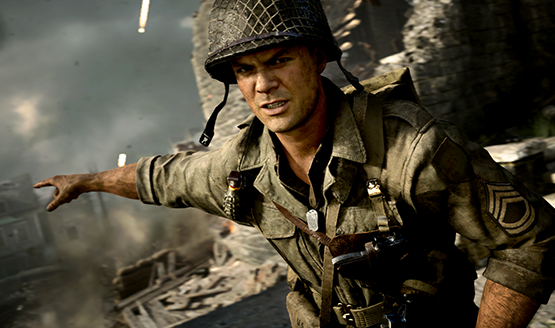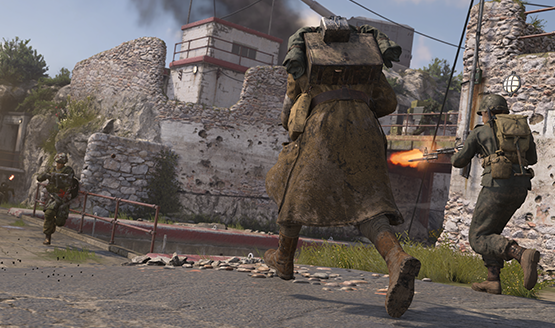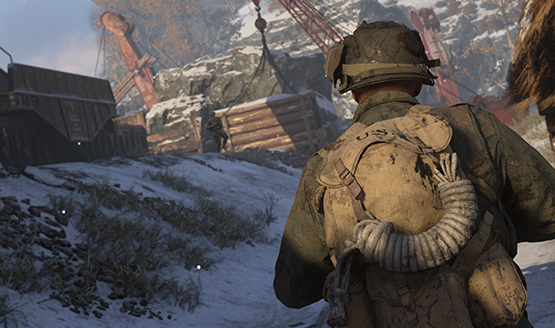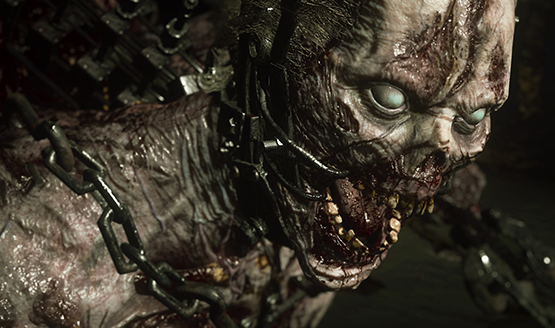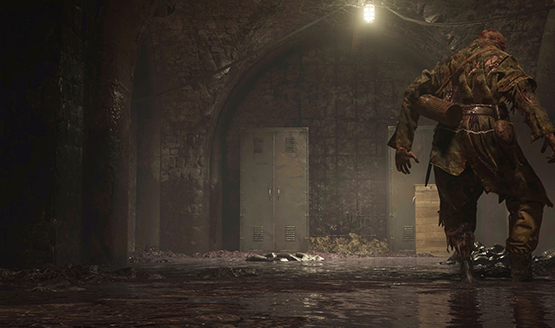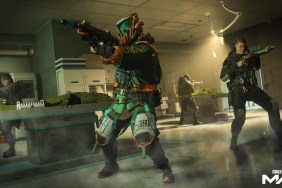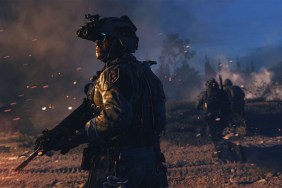Back in 2003, a little game called Call of Duty launched, putting players in the boots of World War II soldiers. Two more games followed, but 2006’s Call of Duty 3 and 2008’s Call of Duty: World at War were the last time the franchised touched WWII, with the next decade of games exploring modern and futuristic warfare. Sledgehammer Games took the helm of this year’s iteration to guide players back to the second World War, once again putting players on the beaches of Normandy, the streets of Paris, and the banks of the Rhine. Call of Duty has largely become three distinct products—Campaign, Multiplayer, and Zombies—and Call of Duty: WWII is no different, having a robust offering for each of the three.
Campaign – Welcome to World War II
Call of Duty: WWII begins on D-Day. On June 6, 1944, a coalition of armies stormed the beaches of Normandy in what was to be a bloody and horrific battle, but set the stage for the rest of the war. WWII places a microscope on an individual squad that highlights some of the ferocity of this great siege. Riding in the boat is claustrophobic, surrounded by other soldiers, everyone’s nerves on edge. Then the gunfire and explosions start. The ramp drops, and most everyone around me dies. I lurch over the side of the boat in an attempt to avoid further shelling and find myself in a sea of red. The beach is a bloody mess of wounded and dead. The task ahead of me seems impossible.
WWII is not an easy game. It’s clear that the team at Sledgehammer didn’t want to make this feel like an arcade shooter. I’d be embarrassed to say how many times I died on my first attempts to push that beach except that I was okay with it. Storming the beach at Normandy shouldn’t be this casual, easy thing to do, and they game effectively communicates that difficulty throughout the campaign. In a twist that took some time to get used to, Call of Duty: WWII moves away from automatically regenerating health (in the campaign only), instead requiring players to use medpacks for healing. These packs can be found on the battlefield, or tossed to you by the medic in your squad.
Cover is imperative, and avoiding those little shots that chip away my health is now more crucial than ever. Static health bars bring a whole new level of awareness to my own positioning and that of enemies. I’m not the super soldier that most first-person shooters have made their main characters out to be. I’m human, and I need to rely on my squad for support. Various characters will provide different abilities, such as Zussman tossing you medpacks, or others throwing ammo or a signal flare for an airstrike. I quickly learned to rely on my squad during missions, and was just as quick to miss characters who weren’t there with me. Zussman out for a particular mission? I had to do that one without the ability to easily get medpacks for healing and I began to miss the characters and parts of my squad that weren’t there.
That camaraderie really gives a Brothers in Arms kind of feel, not just through the cinematics and the story, but through the actual gameplay as well. “Red” Daniels isn’t the hero. He’s got his own personal story that the player will work through, but he’s a part of something bigger, a small piece in a global conflict that impacted everyone’s lives differently. While it gets the personal weight of this war right, in some ways it feels tame on a macro level. I didn’t feel that it ever really took the gloves off and highlighted the atrocities of the Nazis. Yes, we all know what those atrocities are, but we’re talking about the series that had the infamous “airport terrorism” level in Modern Warfare 2 to create a strong emotional response from players. WWII touches on some of those Nazi horrors, but it’s quite the light touch.
This very light touch stands in sharp contrast to the other major release this season that’s taking on the Nazis, brazenly spotlighting just what kind of monsters they are as opposed to just presenting them as soldiers on the other side of a war. Nearing the end of the WWII campaign does start to put the kinds of things the Nazis are capable of into focus, but it feels like Sledgehammer opted to play it safe on that side of things, putting a much stronger focus on the famous battles of World War II and the personal stories of the heroes involved. To be fair, those personal stories are fantastic.
There’s a wealth of things to do in the campaign, from storming the beach at Normandy to infiltrating a Nazi base in Paris while in disguise. That particular stealth sequence and another level in a fog-filled forest feel straight out of something like Inglorious Basterds, and it’s clear through every mission that particular care and attention was paid to make this feel accurate to the places, events, and emotions of each great event in the war. Right through the conclusion, Call of Duty: WWII lives up to its name while taking players back to the war that started this franchise off.
Multiplayer – Part of Something Greater
Call of Duty multiplayer has been getting increasingly more fast paced. Jump packs and wall running have people flying around maps, adding a level of verticality. It’s started to feel less like a war, and more like an arena shooter. Taking things back to World War II, Sledgehammer needed to flip the script and take gameplay back a step too. No more boosted jumps. No more running along walls. The pace is slowed moderately from recent entries. Call of Duty: WWII multiplayer needed to feel like classic Call of Duty, and it does.
What struck me about the multiplayer in Call of Duty: WWII is that it actually feels like each skirmish is taking part in the middle of the war. Where the maps in other shooters can feel like a contained arena, Call of Duty: WWII somehow manages to make its maps feel like they’ve got no boundaries. There are battles, and explosions and a greater war going on outside of the edges of the maps, and the traditional three lane structure is set up in such a way that feels much more organic and less like it was crafted to be part of an arena shooter. Each multiplayer match is just another small battle in the second World War, and I love how Sledgehammer managed to keep that feeling even as far as the more goofy match types (it would have been fascinating if the Axis and Allies were pitted against one another in battleground matches of Gridiron).
I’m sure that the Call of Duty faithful will have their own opinions one way or another on things like Sledgehammer’s map design and balancing of perks and unlocks, but I was happy with the freedom many of their systems afforded me as a player to play how I wanted. Varied map design meant that I wasn’t just playing the same game again and again with different aesthetics. It meant that my strategies and tactics legitimately had to change from one to the next. Though many of the better items and perks are unlocked at later ranks, I was still granted enough options early on—through selection of Divisions—that I never felt pigeonholed into a single play style until I could unlock something else.
New to Call of Duty is the War game mode, which is an asymmetrical battle for objectives, such as pushing up on the beach at Normandy or escorting a tank through a snow covered forest. In many ways, War reminds me of Overwatch and other objective based competitive games that have gained popularity. While this was the multiplayer mode I often had most fun with, Call of Duty: WWII is still largely focused on its core competitive audience, evidenced by there only being three War maps. War is still an unknown quantity, so Sledgehammer is understandably cautious about overly focusing on something that might not pay off, though it seems to me like War has the potential to attract a whole new audience to Call of Duty.
Also new to the series is a social area where players queue up prior to entering multiplayer matches. Headquarters reminds me a lot of the Tower in Destiny, and provides an interesting opportunity to be able to do things in between matches without just staring at menu screens. Headquarters has a live firing range to test out weapons instantly, a place to pick up special challenges that offer various rewards, and even a 1v1 pit where players can challenge each other and test their mettle. A bunch of secrets hide in headquarters as well, from secret patterns of targets to shoot in the firing range to hidden gridiron balls that you can only get to with some expert mountain goating (for the uninitiated, that’s using very small ledges in the environment to climb structures and objects that are otherwise unclimbable).
You may have seen mention that loot boxes in Call of Duty: WWII drop from the sky in Headquarters, showing to everyone around you. This amplifies the social experience and excitement of rallying on a beach to get ready for battle. To me, this feature is less about microtransactions, and more about spurring people to play. It’s about cementing the community. Seeing players with unique skins, or seeing them get a rare drop from a supply crate makes me want to play more and earn more cool things of my own. The more I and others want to keep playing, the bigger and more robust the community is. In this new age of online games, keeping that community alive and impassioned is everything.
Nazi Zombies – A Visceral Core
The folks over at Sledgehammer have a very interesting history, that is, they come from Visceral Games. For those who don’t know, Visceral—before the studio was shuttered—was responsible for Dead Space, and that kind of resume is an interesting recipe for those tasked with making a new iteration of Call of Duty’s famed Zombies mode. Taking things back to World War II, Sledgehammer decided that it was time once again to kill some Nazi zombies, and this time they’d make it dark.
Recent Zombies entries have trended towards more campy and cheesy, espousing a B-movie horror vibe that’s scary while also entertainingly laughable. In fact, Infinite Warfare’s entire Zombies shtick centered on that very theme. What happens, then, when the people behind one of the most terrifying horror games ever created get the opportunity to create Zombies? The result is a twisted and horrifying game, one that is filled with jump scares and grotesque creatures, bound together by nuts and bolts and bands of metal. These undead soldiers truly feel like a grotesque Nazi experiment come to life and the mystery that surrounds this tiny town is brilliantly depraved.
Nazi Zombies is much more accessible than its predecessors, but don’t think that means it’s easy or has forsaken the hardcore players. There is now a “casual” path of objectives that are telegraphed to the player, and the hardcore Easter egg path, which still eludes me, though it was hinted that this hardcore path is the true canon storyline for the Nazi Zombies campaign and will lead into subsequent entries that come with the DLC. Even the more casual objectives are immensely difficult to complete, mostly because waves of Nazi experiments are bearing down on players with increasing strength and ferocity. Opening up this casual path provides a smoother ramp for players. Traditionally I’ve been turned away from Zombies after a few runs and fails, but this one intrigues me and makes me want to look into what else can be accomplished outside of how far I can get on the telegraphed objectives. Once again, Sledgehammer knows that they need to please every part of their community and have done a great job covering the breadth of players to keep people coming back for more.
There’s also a little more permanence. While there are no checkpoints within the game mode itself (die, and you’ll have to start all over, just like every other Zombies mode), leveling up will allow players to get unlocks for different loadouts and special abilities. This means that effort is rewarded by being able to feel a little bit more powerful the next time you face the undead. It’s not a lot, but it does help to entice players who are otherwise be deterred by the constant reset cycle that Zombies usually has.
Occasionally I was met with zombie melee ranges that felt unfair, or I would get stuck on bits of the environment that it didn’t feel like I should get stuck on, leading to some good runs abruptly ending. It’s hard to say if these are issues with the game or just me being bad at Nazi Zombies, but when more players get their hands on it, Sledgehammer can listen to complaints from players and address them if it is an issue. For the most part, I was not met with any problems except for the fact that Nazis are sick and twisted and I never seem to have enough bullets to kill them all again.
The End of the War
World War II was the right move. Call of Duty reaches back to its roots to bring players an entry worthy of the series’ namesake. The campaign is emotional, multiplayer is classic, and Nazi Zombies is downright dark and terrifying. No matter which kind of player you are, there is something for everyone, whether it’s a cinematic story, a competitive and social multiplayer, or an immensely difficult battle against undead Nazis. Call of Duty: WWII is another incredible package of experiences, each distinct from the others, but tied together by the unifying themes of World War II that deserve your attention.
Call of Duty WWII review event travel and accommodations provided by publisher. Version 1.2 reviewed on a PS4 Pro. Also tested on a home standard PS4 under real world network conditions. For more information on review scores, please read our Review Policy.
-
Emotionally heavy campaign through the biggest events of WWII
-
Grounded multiplayer feels like part of a bigger war
-
Nazi Zombies is dark and grotesque
-
Campaign plays it tame in portraying atrocities of the Nazis
-
Some cheap feeling Nazi Zombies losses
